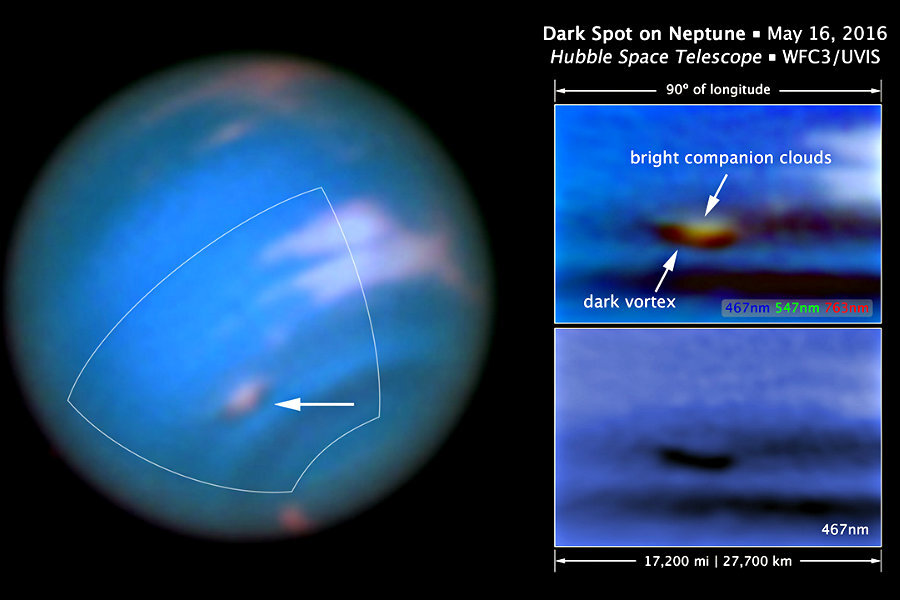Hubble spots a dark and stormy vortex on Neptune
Loading...
New images obtained by the Hubble Space Telescope last month reveal that Neptune might have a dark side.
The latest images show a darkened patch, indicative of high pressure systems, set off by bright companion clouds.
"Dark vortices coast through the atmosphere like huge, lens-shaped gaseous mountains," said Mike Wong, a research astronomer from the University of California, Berkeley, in a press release. "And the companion clouds are similar to so-called orographic clouds that appear as pancake-shaped features lingering over mountains on Earth."
The clouds form when the vortices disturb ambient air and push it up into the atmosphere, where it freezes into what scientists believe are frozen methane crystals, according to NASA.
Researchers have seen these vortices on Neptune before, once by the Voyager 2 spacecraft in 1989, and once by the Hubble Space Telescope in 1994. But this is the first time they have been spotted in the 21st century.
The 1989 Voyager 2 flyby uncovered not just any dark spot, but a massive blotch in its cold, gassy atmosphere that astronomers termed the Great Dark Spot. Eventually, the Great Dark Spot disappeared, but other freckles have popped up in its place throughout the last several decades.
The ice giant's newest storm is in its southern hemisphere and measures about 3,000 miles across, Space.com reports.
Hubble’s new dark spot and the Great Dark Spot are both examples of the same phenomenon, the dark vortices mentioned by Dr. Wong. These atmospheric cyclones occur in Neptune’s troposphere, the atmospheric layer closest to the planet’s surface, and spin in the same direction that Neptune does.
They’re common on large gassy planets, and have be observed on both Jupiter and Saturn as well as Neptune. They’ve been known to occur elsewhere on Neptune, as well, but it has been quite some time since a spot of this size and duration has appeared in the planet’s brilliantly blue atmosphere.
Astronomers first began to suspect that a dark vortex might be forming on Neptune in 2015, when Hubble’s Outer Planet’s Atmospheres Legacy (or OPAL) project began to focus on Neptune.
At first, all they could see were the bright clouds that accompanied the vortex, but in May 2016, researchers were finally able to make out the dark spot.
Researchers say that they are excited about what this new vortex could teach scientists about the evolution, origin, and environmental interactions of dark spots. They also say that studying dark vortices can teach them more about the surrounding atmosphere on planets like Neptune.








